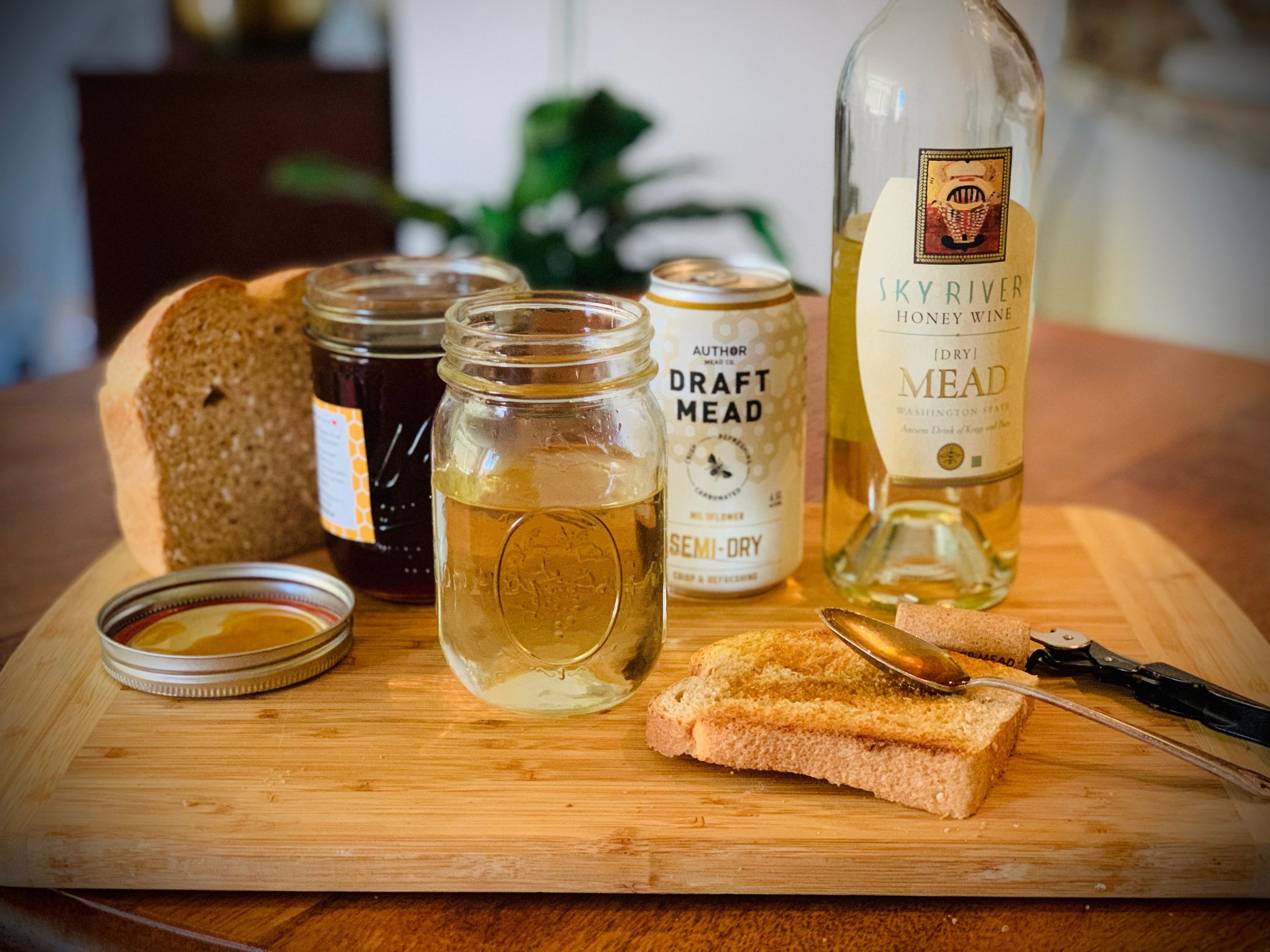Mead, often referred to as the “nectar of the gods,” is a beverage with ancient roots that has seen a resurgence in popularity in recent years. Despite its long history, many people still question whether mead is a legitimate drink or simply a niche curiosity. In this blog post, we will explore the origins, ingredients, varieties, and cultural significance of mead to answer the question: Is mead a real drink?
The Historical Significance of Mead
Ancient Origins
Mead is believed to be the first alcoholic beverage consumed by humans. Pottery vessels containing traces of fermented honey, dating back to 9000 BC, have been discovered in northern China. This predates wine by nearly three thousand years, making mead one of the oldest known alcoholic beverages.
Mead in Mythology and Culture
Throughout history, mead has held a significant place in various cultures and mythologies. In ancient India, the Rigveda (1700-1100 BC) mentions mead as a sacred drink. Greek philosophers like Aristotle and Pliny the Elder also wrote about mead, highlighting its widespread consumption and cultural importance.
In Europe, mead was the drink of choice for many ancient societies. The Celts, Anglo-Saxons, and Vikings all enjoyed mead, and it was often associated with feasts and celebrations. The Old English epic Beowulf features mead as a celebratory drink for warriors, and Norse mythology often references mead as the drink of gods and heroes.
The Making of Mead
Basic Ingredients
Mead is made from three primary ingredients:
- Honey: The source of fermentable sugars.
- Water: Dilutes the honey and facilitates fermentation.
- Yeast: Converts sugars into alcohol through fermentation.
The Fermentation Process
The process of making mead is similar to that of wine, but instead of grapes, honey is used as the primary sugar source. The basic steps include:
- Mixing: Honey and water are combined to create a must.
- Fermentation: Yeast is added to the must, converting sugars into alcohol and carbon dioxide.
- Aging: The mead is aged for several months to several years to develop its flavor.
Variations in Mead
Mead can be crafted to be sweet, semi-sweet, or dry, much like wine. The taste of mead is influenced by the type of honey used, which can vary based on the flowers the bees visited. Additionally, various fruits, spices, and herbs can be added to create different mead varieties, such as:
- Melomel: Mead made with fruit.
- Cyser: A type of melomel made with apples.
- Pyment: A type of melomel made with grapes.
- Metheglin: Mead made with herbs and spices.
- Bochet: Mead made with caramelized honey.
- Braggot: A hybrid of mead and beer made with malted barley.
- Sparkling Mead: Carbonated mead similar to sparkling wine.
The Taste of Mead

Flavor Profiles
The flavor of mead is highly variable, depending on the type of honey and any additional ingredients used. Some common flavor notes include:
- Floral: Derived from the specific flowers the bees visited.
- Fruity: When fruits are added during fermentation.
- Spicy: From the addition of spices like cinnamon, nutmeg, or ginger.
- Caramel: Found in bochet, where the honey is caramelized before fermentation.
Sweetness Levels
Mead can range from very sweet to completely dry. The sweetness level is controlled by the fermentation process and the amount of honey used. Dry meads have little residual sugar, while sweet meads retain more of the honey’s natural sugars.
Cultural and Modern Relevance
Mead in Modern Times
In recent years, there has been a resurgence of interest in mead, driven by the craft beverage movement and a growing appreciation for traditional and locally-sourced products. Mead is now enjoyed by a diverse audience, from historical reenactors to craft beverage enthusiasts.
Health and Sustainability
Mead is often seen as a healthier alternative to other alcoholic beverages. Honey, the primary ingredient, has several health benefits, including:
- Lower Glycemic Index: Honey has a lower glycemic index compared to table sugar, leading to a more gradual rise in blood sugar levels.
- Antibacterial Properties: Honey contains natural antibacterial agents.
- Allergy Relief: Locally-sourced, unpasteurized honey may help reduce allergy symptoms.
Additionally, mead production supports sustainable agriculture by relying on bees for honey production, which is crucial for pollination and the health of ecosystems.
Mead in the Paleo and Gluten-Free Movements
Mead fits well within the paleo and gluten-free movements because it does not require grains or specific topography for production. This makes it an attractive option for those with dietary restrictions or preferences.
How to Enjoy Mead?

Serving Suggestions
Mead can be enjoyed in various ways, depending on its style and ingredients. Some popular serving methods include:
- Chilled: Serve traditional mead chilled in a wine or cocktail glass.
- Warm: Enjoy spiced meads warm, similar to mulled wine.
- Cocktails: Mix mead into cocktails for a unique twist.
Pairing with Food
Mead pairs well with a wide range of foods. Here are some pairing suggestions:
- Sweet Mead: Pair with desserts, cheese, or spicy foods.
- Dry Mead: Enjoy with savory dishes, seafood, or poultry.
- Fruity Mead: Complement with fruit-based dishes or salads.
- Spiced Mead: Pair with rich, hearty dishes or holiday meals.
Is Mead a Real Drink?
The Evidence
Given its historical significance, diverse flavor profiles, and modern resurgence, it is clear that mead is indeed a real and legitimate drink. It has been enjoyed by humans for thousands of years and continues to be a beloved beverage today.
Expert Opinions
Many experts in the field of historical beverages and fermentation science affirm the importance and authenticity of mead. Dr. Patrick McGovern, a renowned archaeologist of ancient beverages, has extensively studied the history and production of mead, highlighting its profound impact on human culture and history.
FAQs
Is mead similar to beer or wine?
Mead shares some similarities with both beer and wine but is distinct in its own right. While beer is typically made from grains and wine from grapes, mead is made primarily from honey. However, like wine, mead can be still or sparkling and can vary in sweetness levels.
How should mead be served?
Mead can be served at a variety of temperatures, depending on personal preference and the style of mead. Some prefer it chilled like white wine, while others enjoy it at room temperature or even slightly warmed, especially for spiced or mulled meads.
Does mead have any health benefits?
Like other alcoholic beverages, mead should be consumed in moderation. However, honey, one of the main ingredients in mead, does contain antioxidants and may have some health benefits when consumed in moderation. Additionally, certain herbal or spiced meads may contain ingredients believed to have health-promoting properties.
How long does mead last once opened?
Once opened, mead can last for several months to a few years, depending on factors such as the alcohol content, how well it’s stored, and the presence of preservatives. Generally, meads with higher alcohol content and those stored in a cool, dark place will last longer once opened.
Can I make mead at home?
Yes, mead can be made at home using simple equipment and ingredients. Many homebrewing stores sell mead-making kits, and there are numerous recipes and resources available online for beginners. Making mead at home allows for experimentation with different honey varieties, fruits, spices, and fermentation techniques.
Conclusion
Mead is not only a real drink but also a beverage with deep historical roots and significant cultural relevance. Whether you are a history enthusiast, a craft beverage aficionado, or simply looking for a new and unique drink to try, mead offers something for everyone. Its diverse flavors, health benefits, and sustainable production make it a valuable addition to the world of alcoholic beverages.
I’m Chen Mina, from Vol de Nuit, who has a special passion for bartending, especially mixing wine, beer, and cooktail. Here you will find content about alcoholic beverages, I will bring you knowledge that few people know about this drink.






